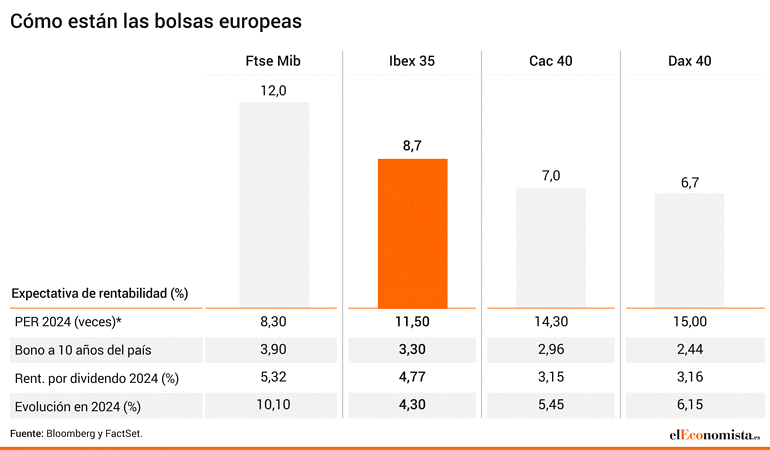In recent days, investors have been taking profits in equities, driven by increased geopolitical tensions but also by doubts about the pace of interest rate cuts by central banks, especially in the case of the Federal Reserve.
Expectations of interest rate cuts in the American market are decreasing as inflation has risen again above what Powell and his team can handle in a context of falling money prices, and that is what has resonated in the market in recent days.
Not to mention, of course, the very strong returns that all those positioned in the stock market have achieved in recent months, leading Wall Street’s main indices to continue breaking their respective historical highs.
This coincides with the first-quarter earnings season, which could be key in assessing where corporate profits will stand this year and, therefore, whether the multiples currently being demanded by the stock market are appropriate or excessive. This is precisely the question now because the revaluation of the S&P 500 has not been accompanied by an increase in earnings estimates, causing multiples to rise to unprecedented levels.
In this context, the P/E ratio (times earnings are reflected in the share price) at which the S&P 500 is trading has surpassed 24 times, with the expected return for the rest of the year of just over 4%. Meanwhile, investors are returning to selling bonds in anticipation of a high-interest environment for longer than expected earlier this year when the T-Note reached a 3.8% return.
Now, however, the US 10-year bond is demanding an annual return of 4.65%, the highest since November, and already half a percentage point above the mentioned return expectation supporting the stock market, something that has not happened since 2002, over 20 years ago.
Regarding whether this issue is, or is not, the real trigger for a correction on Wall Street, Natalia Aguirre, an analyst at Renta 4, explains that “it will depend on earnings.” “It is also necessary to analyze each individual stock because the US stock market is very concentrated, and it cannot be concluded that it is expensive as a whole although the total index may be adjusted,” she adds. “Still, it is evident that the relative valuation of American fixed income versus its stock market is attractive at current levels,” she concludes.
In line with these opinions, Antonio Aspas, partner and advisor at Buy & Hold, believes that “the argument that stocks are expensive only applies to a part of listed companies as the segment of small and medium-sized listed companies still has potential compared to the appreciation experienced by the Seven Magnificent.”
From Miraltabank, Ignacio Fuertes points out that “the correct strategy will continue to be buying on corrections in a market that still has moderate leverage and in an election year with a Fed willing to pull the trigger at some point and with only 1.5 cuts priced in.”
The Situation in Europe
In Europe, the situation is quite different from that of Wall Street, as has become clear in recent weeks. In Europe, inflation seems to be following the path that the ECB considers suitable to start lowering interest rates. Thus, the market expects Christine Lagarde’s team to reduce the reference rate up to four times before the end of the year, leaving it at 3.5%.
This environment is much more consistent with inflows into fixed income, which will increasingly require a lower return, and in turn, a boost to stocks by reducing financing costs for their companies. However, experts do predict lower growth in Europe than in the United States.

In this context, European stocks trade at much lower multiples than their North American counterparts, so expectations of returns are also higher, from 6.7% for the German stock market to the 12% that the Italian market can appreciate if this forecast proves correct. And, at the same time, the returns offered by fixed income securities are lower than those in the US Treasury as the main references are below 4% for 10 years (see chart).


